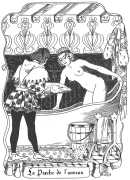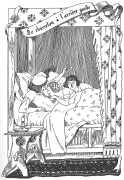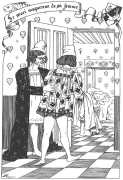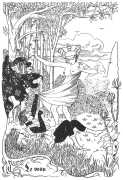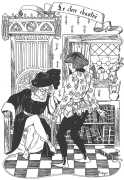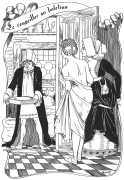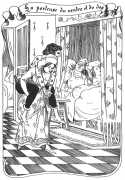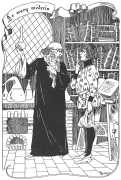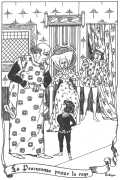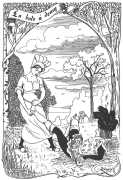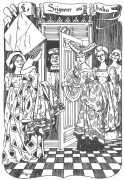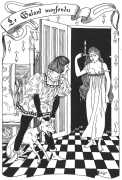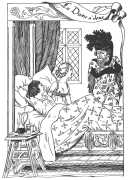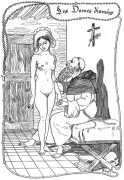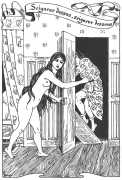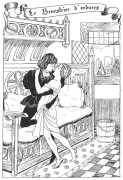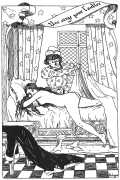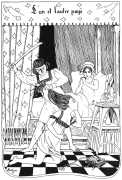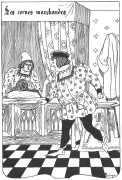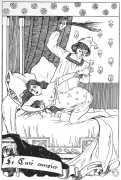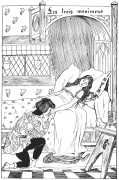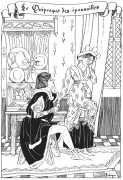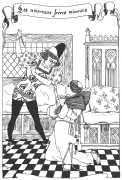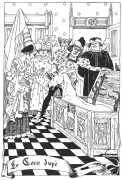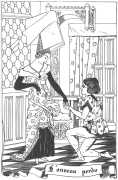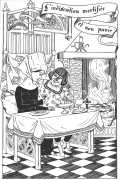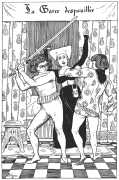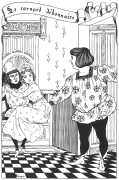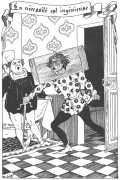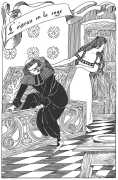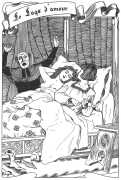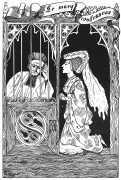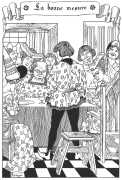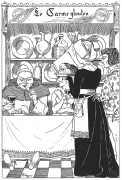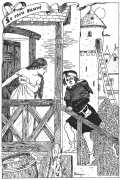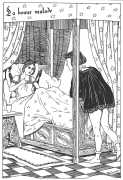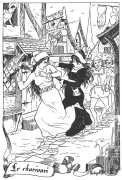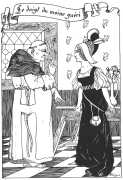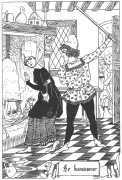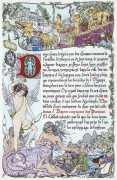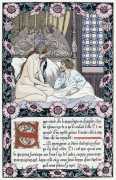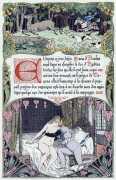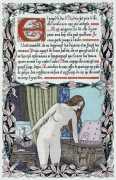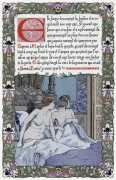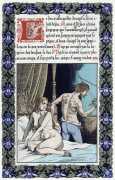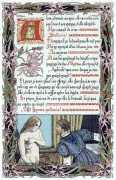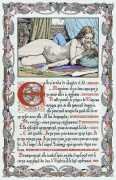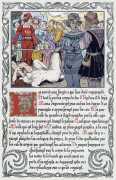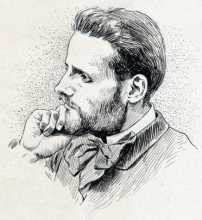 The prolific French lithographer, engraver and illustrator Léon Lebègue was not particularly known for edgy erotica, but was not averse to a little nudity if that was what was wanted.
The prolific French lithographer, engraver and illustrator Léon Lebègue was not particularly known for edgy erotica, but was not averse to a little nudity if that was what was wanted.
Lebègue grew up in Orléans in the Loire valley south of Paris, and in 1883 moved to Le Mans to take drawing lessons. His talent was noticed by Paul-Alfred Colin, then an inspector of Fine Arts, and in 1885 Lebègue took up residence in Paris, where he took lessons from the painter Jean-Léon Gérôme at the École Nationale Supérieure des Beaux-Arts (National School of Fine Arts).
In the early 1890s he began a career as an illustrator for satirical and artistic newspapers, and during the next two decades his illustrations appeared regularly in Soleil du Dimanche, Le Rire, La Plume, Le Gaulois, La Vie en Rose, Au Quartier Latin, Le Patriote Illustré, Le Cycle, La Revue Moderne, Grimace, L’Illustré National, Gil Blas, Le Courrier Français, Le Goût Parisien, and La Critique.
 He also created numerous menus, programmes, illustrated business cards and book covers, and was commissioned to illustrate works by Guy de Maupassant, François Villon, Anatole France, Honoré de Balzac, Théodore de Banville, Joris-Karl Huysmans, Pierre Louÿs and Alfred de Musset. He was also well known as a poster designer, including one for the Salon des Cent in 1895.
He also created numerous menus, programmes, illustrated business cards and book covers, and was commissioned to illustrate works by Guy de Maupassant, François Villon, Anatole France, Honoré de Balzac, Théodore de Banville, Joris-Karl Huysmans, Pierre Louÿs and Alfred de Musset. He was also well known as a poster designer, including one for the Salon des Cent in 1895.
In 1898 he married Eugénie Joséphine Lambert. He exhibited at the Salon of French Artists from 1901 to 1905, but his style fell out of favour and he and Eugénie retired to Le Mans.
At the height of his career, in 1902, the Album Mariani published a review of the artist and his work. In glowing terms, it reported ‘Very quick-witted, tall, thin, slender, with the bronzed complexion of medals, the black beard trimmed to a point, this is Léon Lebègue. The eyes are lively and sparkling, with a visual finesse. The face overall is very refined, in certain features evoking that of Félicien Rops, remaining in one’s memory like a beautiful cameo. Coloured with romanticism in the manner of Achille Devéria and Célestin Nanteuil, of the chronicles of the Middle Ages or the beautiful stories of the Renaissance, Léon Lebègue has produced many masterpieces of fine observation observation, the measure of an inventive, bold and charming spirit. The pretty, the light, the infinitely small detail of ornament attracts him. Illustrated periodicals compete for the happy discoveries of this exquisite, witty and erudite artist, and this is how, little by little, the already admired and sympathetic name of this young master of whims and inventions of images continues to spread throughout the world.’
We are very grateful to our Russian friend Yuri for introducing us to the work of this artist.



